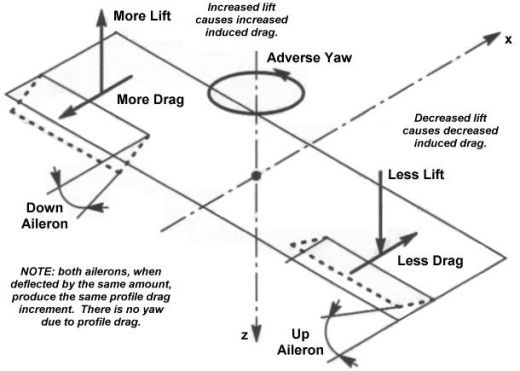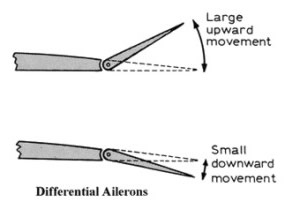one thing i've noticed when flying my corostick. on a low slow flights, my corostick tends to drop its tail when making a slow bank turn (this is how i describe it before i really know what actually the problem is), and this is the attitude that i dont like to see on my plane. by searching the net and asking other pilot, this is what i've got from one bmnf flyer (masam). and it is the answer that im looking for (it make sense).
this is what he explained:
"look for adverse yaw in the internet ...." (very promissing)
"in a bank turn, plane turn by rolling (with some ele input) making one wing tip higher than the other. at the same time differ the speed at both wing tips and the drag they produce, making it tends to yaw to the opposite side of the turn. thus giving u a tail drop attitude. meaning, when u make left turn (roll to left) the plane tends to yaw to the right. it might be the wing dont have enough dihedral."
afterward, base on that, i searched the net (gaining more info). this one of what i've found that could summarize it:
Adverse Yaw ... an operating defect
For an airplane to turn, it must be banked so the total lift is divided into a vertical component that supports the weight of the airplane, and a horizontal component that causes the turn.
To make a left turn, the aileron control is moved left. The right aileron moves down, increasing the camber and lift of the right wing, thus causing it to rise. The left aileron moves up, decreasing the camber and lift of the left wing.
The adverse yaw problem arises (no pun intended) because lift and drag are directly proportional. With the increased lift of the right wing comes increased drag, and the decreased left on the left wing causes a decrease in drag.
These combine to cause the nose to yaw to the right. This momentary yaw (to the right in a left turn, to the left in a right turn) is adverse yaw, sometimes called adverse aileron drag.

MINIMIZING ADVERSE YAW
Some aircraft designers have tried to compensate for adverse yaw by installing either differential-type or Frise-type ailerons.
Differential Ailerons
When the aileron control of differential-type ailerons is moved, the up aileron travels farther (creating more drag) than the down aileron.
Frise Ailerons
When the aileron control of Frise-type ailerons is moved, an offset hinge causes the forward part of the upward deflected aileron to be exposed below the wing (creating extra drag).
Both systems eliminate much, but not all, of the adverse yaw.
but the problem is, my corostick uses no ailerons. most of what i've found in the net refers to this kind of explaination. attitude cause by using ailerons.
but it doesnt matter, at least i know what actually happens and learned something from it. good thing to know.
as for my problem, i might give it a try (waiting for the right time and thoughts, weather to mod my current wing or build a new one with a promissing dihedral) with the sollution suggested to me at the field.


No comments :
Post a Comment
pls leave your email or other means of contact info.